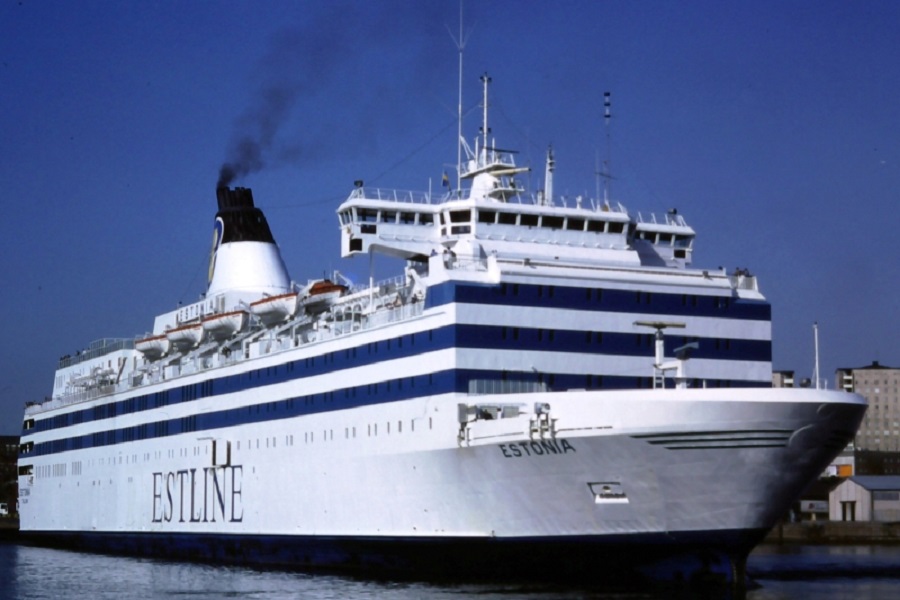Close relatives of the people who died in the sinking of MS Estonia will organise a privately initiated expedition to the wreck of the ferry; the relatives claim that many questions related to the disaster remain unanswered by official investigations that have been conducted over the past 27 years.
The relatives have established a foundation – Mare Liberum – to support their expedition and privately investigate the wreck of MS Estonia that sank on route from Tallinn to Stockholm on 28 September 1994 with a loss of 852 lives, the second-deadliest peacetime sinking of a European ship.
Seven questions
“Although during these decades numerous different investigations have been carried out, they have not been able to give the survivors and close relatives of the deceased exhaustive answers regarding the reason why Estonia perished,” the manager of Mare Liberum, Margus Kurm, said in a statement. “Quite on the contrary, diving operations performed in the past two years have led to new suspicions and questions which require a serious investigation.”

Kurm is a former state prosecutor of the Republic of Estonia. From 2005-2009, he was the head of the committee for the investigation of the sinking of MS Estonia, formed by the country’s government. Kurm pointed out seven questions to which the expedition will look answers for:
- Why and when did the visor disconnect from the ship?
- Did the ramp completely open before the sinking of the ship?
- What exactly are the damage locations on the right deck, when and what caused such damage?
- Why and when did intermediary walls of the abaft and car deck of the ship become damaged?
- Does the hull of the ship have any more damaged locations of which we do not know?
- What objects are located around the wreck and in the assumed trajectory of the sinking of the ship, and what is their connection with the sinking of the ship?
- How exactly did different parts of the ship get filled with water?
Kurm noted that the expedition’s goal was “not necessarily to challenge the results of the state-led investigation” or “debunk previous official versions”.
“We agree to extensively cooperate with safety investigation bodies during the conduct of our investigations and collection of evidence,” he said. “Nevertheless, we are confident that evidence must be analysed, and conclusions must be made separately, preferably by a number of different international expert groups. This way we will not allow a situation where governments again form a state commission which, despite offering all parties a satisfactory compromise, will not find the truth.”
Professional equipment
Mare Liberum plans to conduct underwater research, to investigate the shipwreck on the sea bottom and to interview survivors of the catastrophe once again. “After gathering evidence, the entire collected material will undergo a thorough scientific analysis. Additionally, a 3D model of the bow visor of Estonia has been prepared, which now makes it possible to study damage of the visor from the distance,” the foundation said.
The diving expedition is planned in the second half of this September. RS Sentinel, a diving support vessel that belongs to the German company, RS Offshore, will be used for the mission.
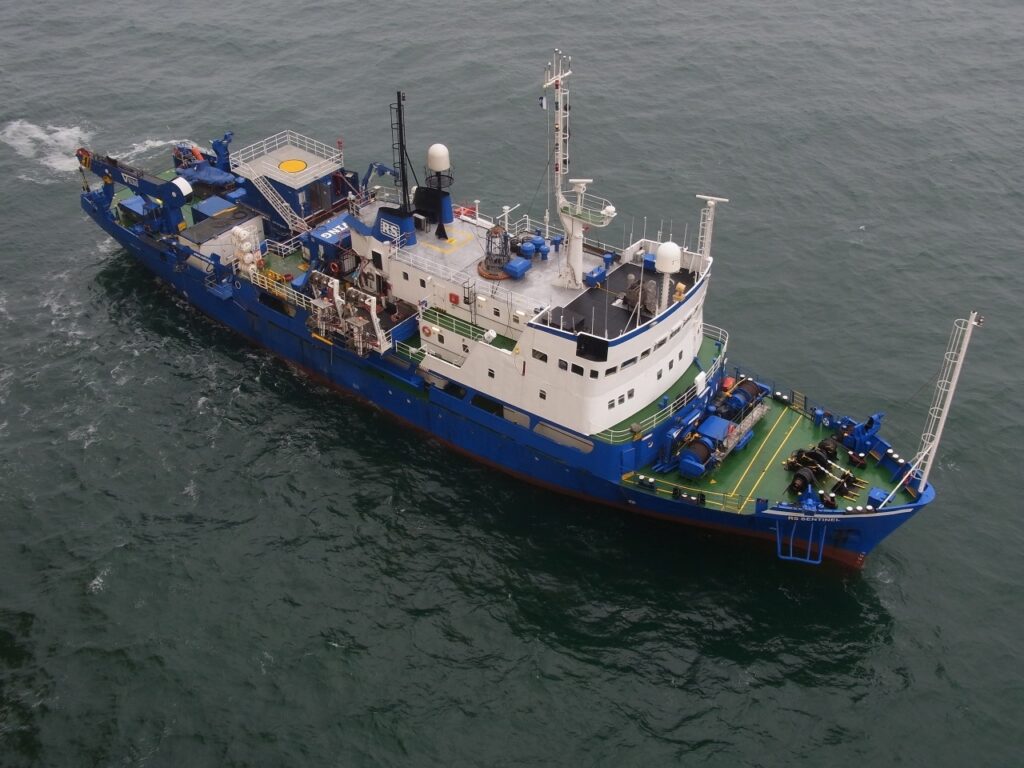
The expedition will include two crews of underwater robots with a total of four robots of different sizes, as well as four divers with supporting personnel and equipment. During the diving operations, damage spots on the hull of Estonia will be mapped and 3D-scanned, and the areas surrounding the car deck and the shipwreck will be studied.
Materials gathered during the investigation will be analysed by Andrzej Jasionowski, a forensic naval architect. His Singapore-based company, SophusQuorum, specialises in expert examinations of sea accidents. From 2005-2008, Jasionowski was a member of the scientific consortium that conducted a number of different studies regarding MS Estonia on behalf of the Swedish government.
Mare Liberum said its investigation was funded from donations and the sale of media rights – its biggest supporter in Estonia is Postimees Grupp, one of the largest privately owned media organisations in the country.
Why now?
Ever since the disaster struck – in 1994 – and beyond, many of the close relatives of the MS Estonia victims have expressed dissatisfaction of the official version into the causes of the sinking.
The official disaster report, released in 1997, said the fatal event started when the locks on the ferry’s bow door failed from the strain of the waves and the door separated from the rest of the vessel, pulling the ramp behind it ajar. This allowed water into the vehicle deck, capsising and ultimately sinking the ship.
Over the years, many conspiracy theories that question the official version have emerged – some of which are based on the testimonials of some of the survivors who reported having heard loud bangs, approximately half an hour to an hour before MS Estonia sank. The others point out the ship sank too quickly (in about half an hour), arguing that the ferry of that type should have remained afloat even after capsising.
The lobby groups representing the close relatives demanded new investigations, only to be turned a deaf ear by the successive Estonian, Swedish and Finnish governments. In 1995, a treaty was agreed by Sweden, Finland, Estonia, Latvia, Poland, Denmark, Russia and the United Kingdom, declaring sanctity over the disaster site, prohibiting their citizens from even approaching the wreck of MS Estonia.
But in 2020, it all suddenly changed, causing the Estonian, Swedish and Finnish governments make u-turns. It all came down to a Swedish documentary, “Estonia: The Discovery that Changes Everything” that premiered on a Swedish TV channel and showed the wreck of MS Estonia had a large hole in the hull. The footage revealed four metres high and 1.2 metres wide hole in the ferry’s hull, on the starboard side – that until then, had never been mentioned or documented.
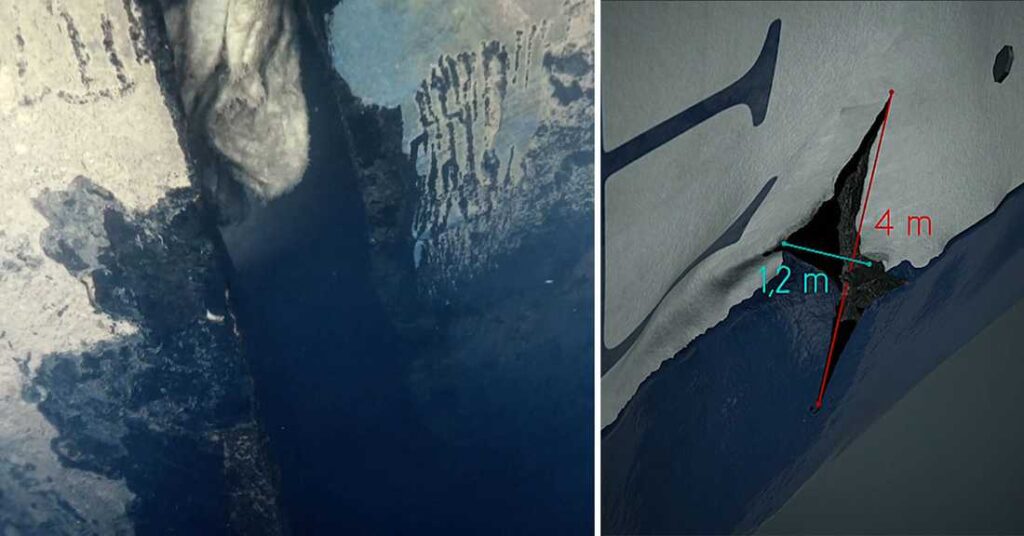
According to the released footage, it is not clear whether the hole appeared before or after the ferry sank. Some experts ruled out an explosion, but others said it could have been caused by a collision. Jorgen Amdahl, a professor of marine technology at the Norwegian University of Science and Technology, said in the documentary that “it is not ruled out the damage played a big role in the sinking”.
The new revelation and the media storm that followed prompted the Estonian prime minister and foreign minister to meet with their Swedish and Finnish equivalents and announce that a “new technical investigation” would take place.
Indeed, the governments kept their word – or at the very least, they put up a show. On 9 July 2021, the Estonian icebreaker, EVA 316, and the Swedish research vessel, Electra, launched a new inspection into the shipwreck.
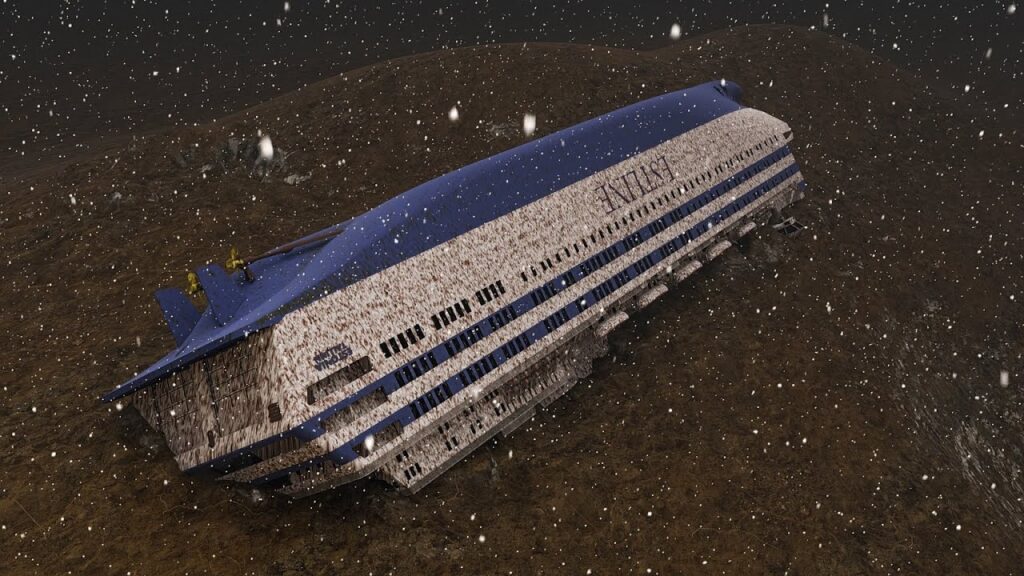
A week later, the Estonian Safety Investigation Bureau said the preliminary survey identified various damage and cracks on the ship’s hull. However, this was not a dramatically new information – the main question is: was the damage caused by the seabed or some other, unidentified object or objects? The new investigation also revealed that the ferry’s vehicle ramp lies in a fully-open position; it had previously been reported to have been in a closed position.
The privately initiated investigation now wants to find answers to the questions it claims remain unanswered by official investigations that have been conducted over the past 27 years.
Swedish and Finnish coastguards have halted film crews and divers
But private investigation may also face some obstacles. In 1995, a treaty was agreed by Sweden, Finland, Estonia, Latvia, Poland, Denmark, Russia and the United Kingdom, declaring sanctity over the disaster site, prohibiting their citizens from even approaching the wreck of MS Estonia.
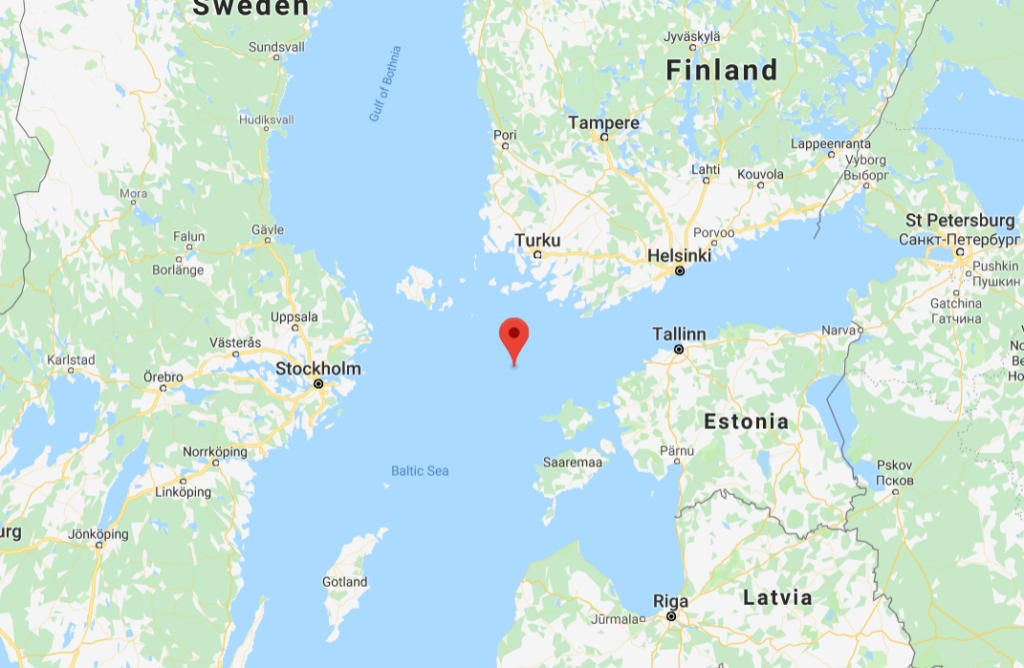
In subsequent years, the Swedish and Finnish coastguard vessels repeatedly enforced the treaty, by obstructing and sometimes halting the independent film crews and divers from conducting investigation. In turn, this consistent obstruction only fuelled the ever-circulating conspiracy theories that the governments had something to hide in relation to MS Estonia.
Indeed, the journalist Henrik Evertsson and camera operator Linus Andersson, the filmmakers behind “Estonia: The Discovery that Changes Everything” and Swedish citizens, were in 2020 also charged in the Swedish courts for “violating a burial site” – prompting the European Federation of Journalists to condemn the decision of the Swedish authorities.
The two filmmakers were acquitted by the first-tier court in Gothenburg, Sweden, in February this year – the court argued that since the shipwreck lies in the international waters, international laws rather than national ones, apply.
A representative of Mare Liberum told Estonian World that they remain hopeful no obstruction by the governments will occur this time around. She also pointed out the shipwreck lies in the international waters – ie the international laws are superior over the national laws.
Huge shock in 1994
MS Estonia, a 16,000-ton cruise ferry that began serving the Tallinn-Stockholm route in 1993 and was operated by the Swedish-Estonian shipping company, Estline, was the largest ship sailing under the Estonian flag at the time. In fact, the elegant white and blue coloured ferry was seen as one of the symbols of newly found confidence of the young republic that had just regained independence, three years prior.
But in the morning of 28 September 1994, the entire country of Estonia woke up in shock to the news that MS Estonia had sunk in the early hours. For Estonians, it was their very own “Kennedy moment” – everyone who was alive at the time, remembers where they were and what they were doing upon hearing the news.
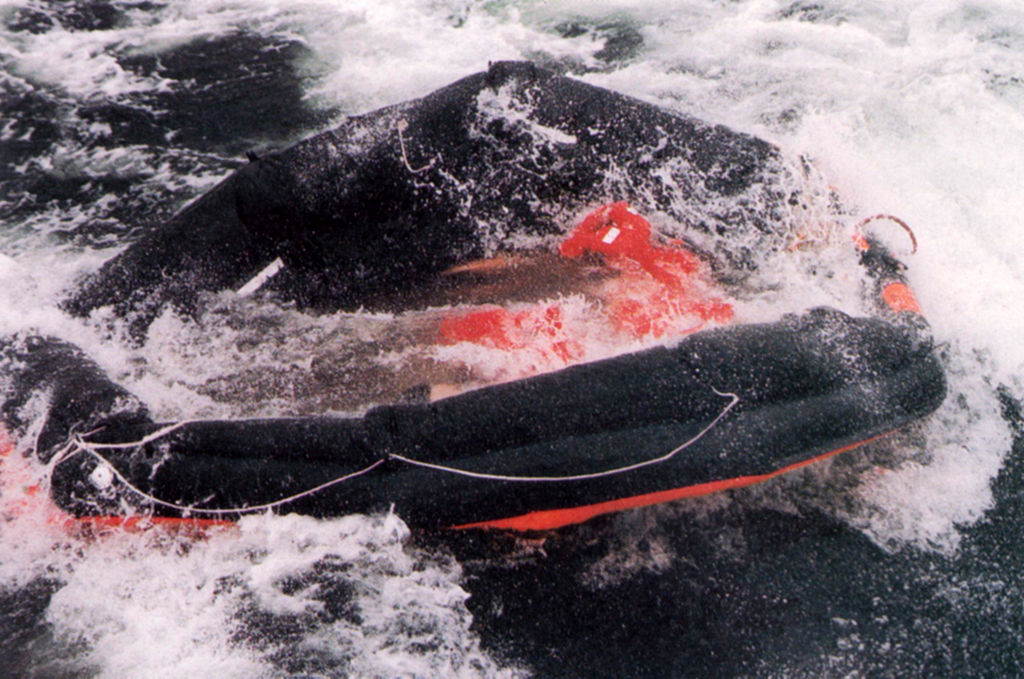
The ship sank in the Baltic Sea while on a scheduled crossing, en route from Tallinn to Stockholm, where she had been expected in the morning. MS Estonia disappeared from the radar screens of other ships at around 01:50 EEST in international waters, about 22 nautical miles (41 kilometres) from the Finnish island of Utö. The ferry sank to the depth of 74 to 85 metres (243 to 279 ft) of water.
What made it headline news around the world was the huge loss of life. Of the 989 on board, only 138 were rescued alive (one of whom died later in hospital). As such, it is the second-deadliest peacetime sinking of a European ship, after the RMS Titanic, and the deadliest peacetime shipwreck to have occurred in European waters, with 852 lives lost. Most of the victims were Swedes (501), followed by Estonians (285).
Cover: MS Estonia in port in 1994.

